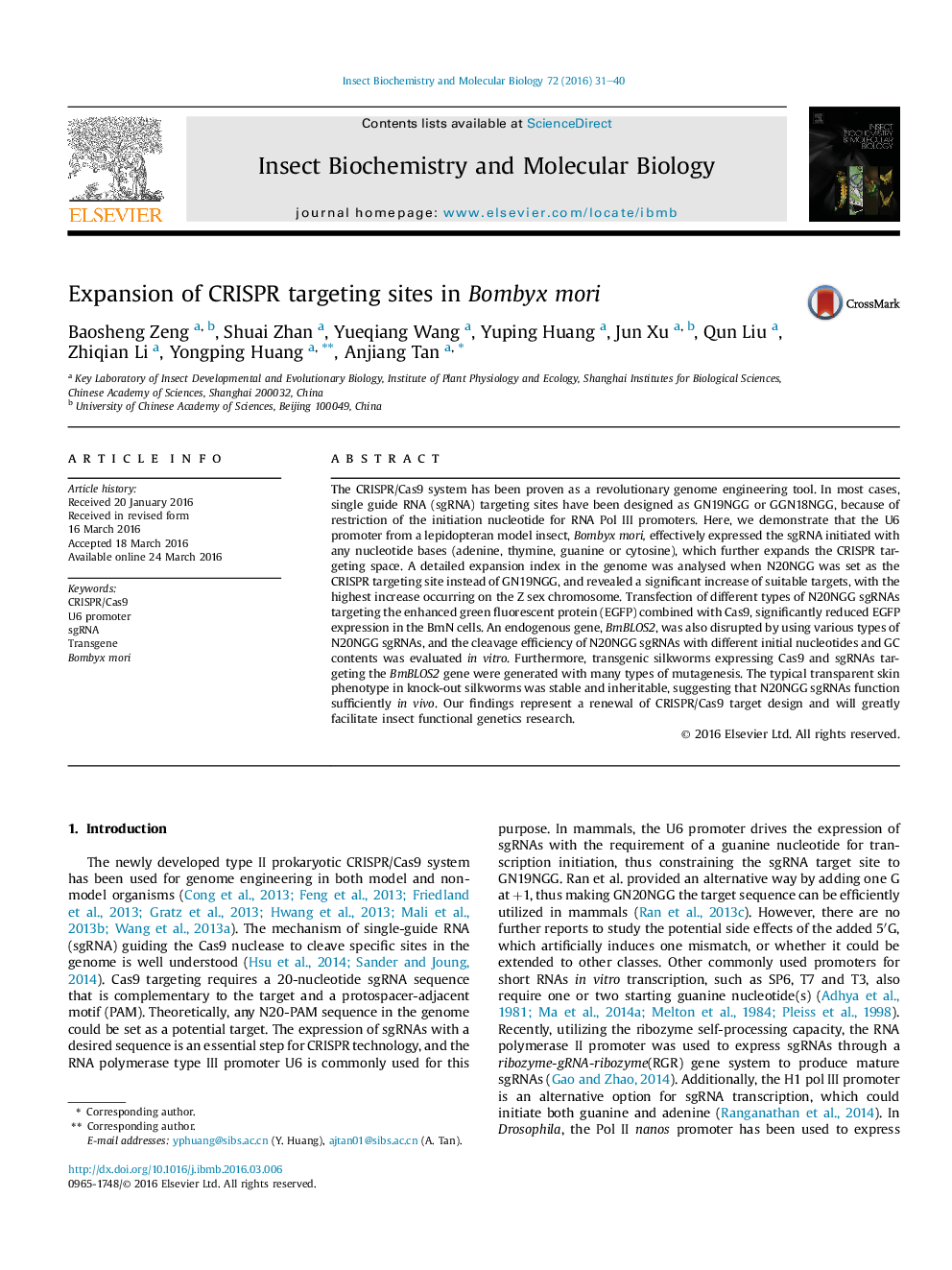| Article ID | Journal | Published Year | Pages | File Type |
|---|---|---|---|---|
| 1981965 | Insect Biochemistry and Molecular Biology | 2016 | 10 Pages |
•The Bombyx mori U6 promoter effectively expressed N20NGG type sgRNAs for genome editing in vitro and in vivo.•Significant expansion of suitable CRISPR targeting sites in the insect’s genome when using N20NGG.•The SSA assay suggested some design principles of CRISPR targets in silkworms.
The CRISPR/Cas9 system has been proven as a revolutionary genome engineering tool. In most cases, single guide RNA (sgRNA) targeting sites have been designed as GN19NGG or GGN18NGG, because of restriction of the initiation nucleotide for RNA Pol III promoters. Here, we demonstrate that the U6 promoter from a lepidopteran model insect, Bombyx mori, effectively expressed the sgRNA initiated with any nucleotide bases (adenine, thymine, guanine or cytosine), which further expands the CRISPR targeting space. A detailed expansion index in the genome was analysed when N20NGG was set as the CRISPR targeting site instead of GN19NGG, and revealed a significant increase of suitable targets, with the highest increase occurring on the Z sex chromosome. Transfection of different types of N20NGG sgRNAs targeting the enhanced green fluorescent protein (EGFP) combined with Cas9, significantly reduced EGFP expression in the BmN cells. An endogenous gene, BmBLOS2, was also disrupted by using various types of N20NGG sgRNAs, and the cleavage efficiency of N20NGG sgRNAs with different initial nucleotides and GC contents was evaluated in vitro. Furthermore, transgenic silkworms expressing Cas9 and sgRNAs targeting the BmBLOS2 gene were generated with many types of mutagenesis. The typical transparent skin phenotype in knock-out silkworms was stable and inheritable, suggesting that N20NGG sgRNAs function sufficiently in vivo. Our findings represent a renewal of CRISPR/Cas9 target design and will greatly facilitate insect functional genetics research.
Graphical abstractFigure optionsDownload full-size imageDownload high-quality image (342 K)Download as PowerPoint slide
